

Top tips on how to build a successful app gamification strategy
Top tips on how to build a successful app gamification strategy
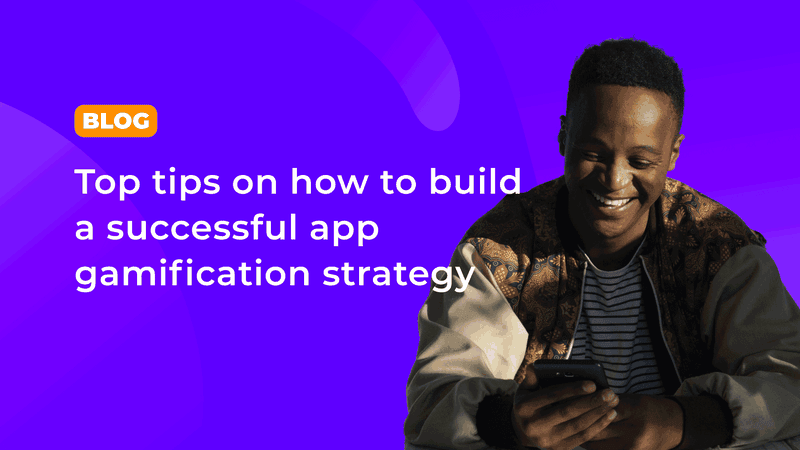
This article cover illustrates the core concept of creating a winning app gamification plan.
App gamification doesn’t conform to a one-size-fits-all model. In fact, that’s what makes it so powerful! When done right a gamified app is built to drive and reward specific user behavior. For instance, you can use it to boost user activation and increase user engagement! But before you create a great UX and reap the benefits, you need to learn how to build an app gamification strategy. Let’s look at some tactics & gamification examples you could use for your goals!
- What is app gamification?
- Why you need a gamified app
- How do you increase user engagement with mobile app gamification?
- 4 tips on how to build an app gamification strategy
- 6 effective features to start your gamification journey
- How to successfully implement your mobile app gamification strategy
- FAQ - How to build an app gamification strategy
What is app gamification?
Gamification is the use of game-like elements like badges, points, and levels in non-game contexts. In short, app gamification leverages the data mined from user behavior to incentivize desired user actions. Essentially, it’s a way to persuade and motivate!
Why you need a gamified app
Gamification works on a very human level. Recently, behavioral psychologists have studied how gamified apps tap into the deepest parts of human psychology to create a powerful motivation. For example, gamification fulfills innate and complex needs like fun, personal growth, and belonging.
And when you meet these needs, users gain intrinsic motivation. This means that users are motivated not by external drivers such as rewards or prizes, but through enjoyment and personal fulfillment. To be sure, this is crucial for retention and user engagement.
Supercharge your user engagement with app gamification! Check out our definitive guide to app engagement & retention and get ahead of the competition.
How do you increase user engagement with mobile app gamification?
When your app is gamified, it becomes fun and satisfying to use and that creates user engagement. Take gamified in-app communities, for example. Studies show that in-app communities make customers 60% more loyal! And higher retention means more opportunities to engage! Gamified communities increase engagement because of competitive features like challenges that make the UX more exciting, not to mention the social elements that fulfill the need to belong.
You can also increase user engagement with features like goals and deadlines. Case studies show that adding a deadline greatly helps goal pursuit - making it more likely users will engage to hit their targets. Of course, any app can do this! Whether you’re a fintech app encouraging users to save money, or a mHealth app letting users set exercise goals, you can customize your use of gamification to align with your strategy.
4 tips on how to build an app gamification strategy
To effectively create a gamified app, you need a consistent and integrated strategy. Indeed, today's mobile app users expect this! Especially since the age groups with the highest levels of user engagement are Gen Z and Millennials - the ‘digital native’ generations. Given this, your strategy must create a coherent user experience.
So how do you build an effective gamification strategy?
- What does your app do? Analyze your app’s key features and user actions.
- Who are your users? Learn more about your users and what motivates them.
- Identify the touchpoints. These interactions are what you can leverage. Think about what the ideal user behavior at these points should look like.
- Learn from the best! They say that no ideas are original, just their executions. To be sure, it is smart to learn from other gamified apps, especially if they have the same goals as you.
Get started on your own gamification journey today! Book a custom gamification workshop & create your own roadmap!
6 effective features to start your gamification journey
Progress bars make your UX easy (and boost brand trust)
Progress bars fill up as a user advances through a task. At its base, the feature is a clear way to provide instant feedback, which increases the perception of app responsiveness. Likewise, research shows progress bars reduce the ‘cognitive load’, in other words taking a weight off of your user’s mind. In short, the user knows they can rely on you! That’s an essential step in building brand trust and more user engagement.
Streaks are an incentive for daily user engagement
While they are simple, research shows that streaks are effective in boosting daily user engagement. Streaks incentivize engagement by keeping count and rewarding those who notch up high numbers. It works the other way too, nobody wants to lose a streak!
Hotzones keep the UX unpredictable and exciting
Everyone remembers the all-important boss battles they played as a kid. Hotzones work in the same way, acting as flashpoints where users can earn double points. These tests of competence are unpredictable and add variety to the challenges your UX should provide.
Challenges are a focused way to drive user engagement
On that note, a great way to incentivize user engagement is by challenging your users! Studies show that challenges positively affect the ‘sustained use’ of apps. Even better, your challenges can also align with your business goals and drive desired user behavior.
Levels are fun and customizable progress trackers
More than another way to display user progress, levels are uniquely powerful because they are both easy to understand and customizable. Levels can reflect your brand identity, act as a clear goal that justifies engagement, and also be an effective reward touchpoint!
Rewards like badges and points are indispensable
Badges and points are highly motivating, especially when timed right. Received after completing a task (and the dopamine hit that comes with it), the effort expended suddenly feels worth it! Indeed, timely positive reinforcement enhances the effects of a reward.
Gamify your app, 1 building block at a time! Discover how to instantly increase daily active users by 58% with our app gamification platform!
How to successfully implement your mobile app gamification strategy
Tips & gamification examples for mHealth apps
mHealth is diverse, from specialized trackers to general fitness, but gamification works for both! Diet trackers, like mySugr for diabetes patients, can greatly benefit from gamifying their repetitive tasks. Badges, streaks, and levels can be a great way to incentivize user engagement and make the tasks fun and intrinsically motivating.
But beware - when dealing with such sensitive health information, user privacy is paramount. Indeed, many mHealth app users are concerned about privacy. So while it can be effective to compare users to their peers, putting sensitive data on a public leaderboard might be counterproductive. MySugr challenges users to keep an eye on their diabetes and it clearly works. The app recently received an investment of $4.8 million!
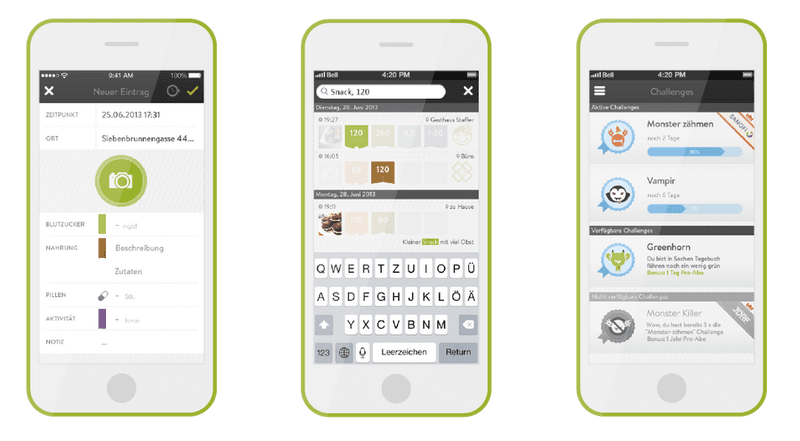
The mySugr app provides an excellent example of gamification in mHealth, using challenges to motivate users with diabetes.
How finance & fintech can build a gamified app
Done right, fintech and gamification can do great things! For example, China’s Alipay gave points to users with CO2-friendly habits like using cycling or buying bio-friendly products. Currently, those points have gone towards planting over 600 million trees!
However, as you are dealing with people’s money, a gamified finance app should be responsible for its application. Finance expert Bjorn Cumps shares his insights on how to build an app gamification strategy in fintech:
Bjorn Cumps - "Have a very clear goal, incentivize ideal user behavior, and make the process fun and engaging. Gamification should be used to take away the barriers that limit a user from fully engaging."
The success of Alipay has prompted inspiration across the world, like Banx in Belgium.
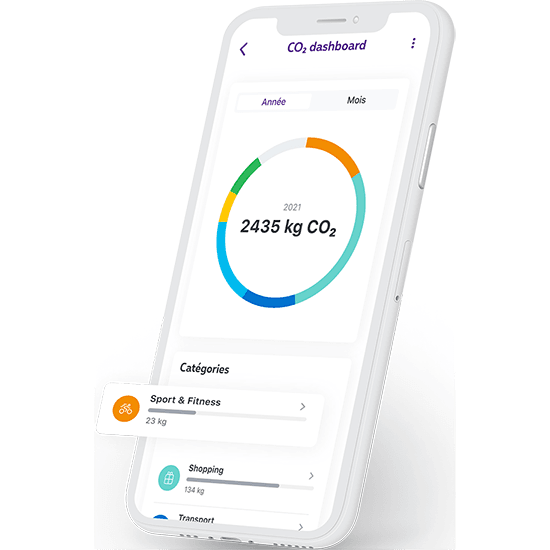
This dashboard from the Banx app shows how fintech can gamify eco-friendly behavior by tracking CO2 impact.
How to create a gamified app for the education sector
Education is the second most gamified vertical, behind only retail. An important aspect of gamifying education is learning how to give feedback. Research shows that students are motivated by the positive reinforcement provided by points and badges, but also by negative reinforcement!
When it comes to negative reinforcement, it is highly effective only if the user failure can be easily and quickly repaired. To be sure, you don’t want to negatively reinforce a user if, for example, they can not immediately re-take the failed test. In addition, if users feel that your feedback is nudging them on a preordained trajectory, you can induce the ‘boomerang effect’. Essentially, the student will adopt the exact reverse of what you want! To avoid this, make every task matter - and make it obvious why it matters!
Kahoot is a gamified education platform that allows for more interaction during classes. Teachers can share a code in class & students get to compete with their classmates to rank on the leaderboard! With 50 million monthly users Kahoot is popping up in classes around the world. Gamification features such as leaderboards, points, and visual rewards like digital confetti all work to boost user engagement.
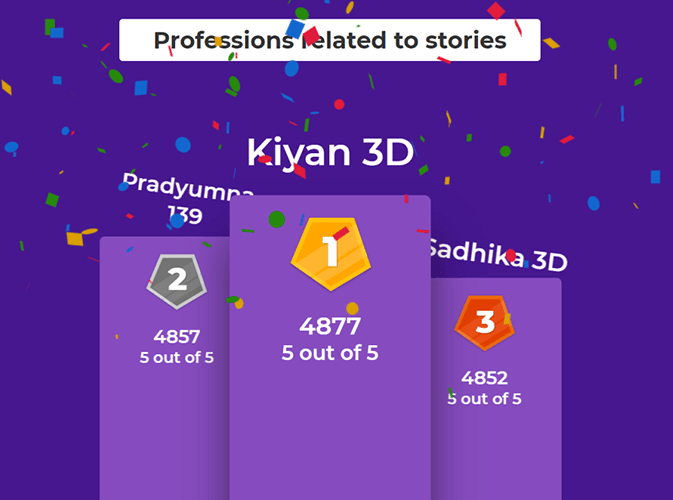
The Kahoot! platform uses leaderboards and points to make classroom learning more competitive and engaging.
How fan apps should approach gamification
Fan apps are ideal for gamified communities and benefit uniquely from higher engagement. Any app can leverage the data mined from user engagement, but fan app users start off with more brand affinity. As such, boosts to your marketing efforts are doubled! Indeed, the more data you have, the more effective your personalized and contextualized offers will be.
The Real Madrid app has such an active community that fan profiles grew by nearly 400% in the past two years, engaging millions of users!
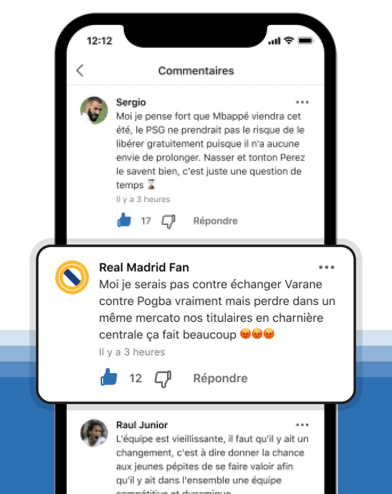
The Real Madrid fan app illustrates how gamified communities can dramatically increase user profile creation and interaction.
Want to build a gamified app but not sure where to start? Get in touch with our experts & discover your next steps!
FAQ - How to build an app gamification strategy?
What is app gamification?
Gamification is the use of game-like elements like badges, points, and levels in non-game contexts. In short, app gamification leverages the data mined from user behavior to incentivize desired user actions. Essentially, it’s a way to persuade and motivate!
Why do I need a gamified app?
Gamification works on a very human level. Recently, behavioral psychologists have studied how gamified apps tap into the deepest parts of human psychology to create a powerful motivation. For example, gamification fulfills innate and complex needs like fun, personal growth, and belonging.
How do you increase user engagement with mobile app gamification?
When your app is gamified, it becomes fun and satisfying to use which helps to increase user engagement. To provide just one example, competitive and social in-app communities boost user retention by nearly 300%. And higher retention means more opportunities to engage!
What are examples of gamification features?
Gamification requires an integrated strategy and several features can create this. Progress bars make the experience easier to understand. Levels, badges, and daily streaks incentivize user engagement with rewards. In addition, unpredictable hotzones and challenges test user competence and drive user behavior.
Related Posts

How to boost SaaS product adoption? The science you need to know.
Top product-led SaaS companies are using behavioral psychology to make their product experiences better and stickier. So how can it help to increase SaaS product adoption? Get started with 12 psychological phenomenons to improve your product!

How to craft a great referral program with gamification? ( +8 examples)
Crafting a gamified referral program boosts engagement by capturing interest and enhancing retention. Key steps involve setting KPIs, establishing rewards, designing compelling CTAs, and using versatile software. Many companies have achieved success with gamification elements in referral, including Mailchimp's badge system and Swissborg's leaderboards. With effective gamification, referral programs ensure success and maximize reach.

